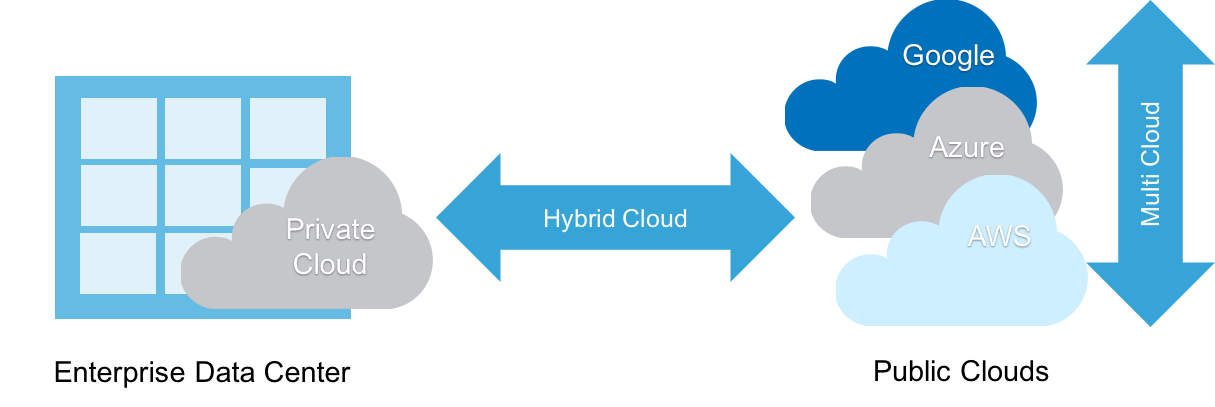Well we just opened up a hornet’s nest didn’t we?! Our recent announcement of the new Cisco UCS S-Series Storage Server definitely caused a stir in the industry. We launched into the emerging scale out storage market with a broad ecosystem of solution partners backed by amazing customers like Cirrity and Green Cloud who use our Unified Computing System. We received really great responses from analysts, press, and independent bloggers alike. But you know you hit the nail on the head when you garner the attention of people selling the opposite of what you are selling. We received passionate comments directly from people either working for Amazon Web Services or whose careers are linked to AWS.
These are the sort of reactions we were looking for that validates we are onto something bigger. Unfortunately the message landed with these folks as “on-premises storage or cloud storage” while our message is “on-premises storage and cloud storage.” Our successful acquisition of CliQr which is now Cisco Cloud Center is one of those proof points. As part of our hybrid cloud storage strategy, we view cloud storage as complimentary to on-premises data center storage. This is why we started a simple TCO analysis to compare the two and the initial results were surprising.

A true hybrid cloud approach creates a symbiotic relationship where data should be able to fluidly move to and from public cloud depending on your business needs. Public cloud service providers have done an amazing job creating seemingly low cost services that are easy to adopt and highly scalable. For example take a look at the AWS S3 pricing web page, you can see transferring data into AWS S3 is completely free so you are only paying for the storage you use. Sounds great right? They even take all major credit cards making adoption almost as easy as submitting an expense report to your employer for a monthly mobile phone bill. Who wouldn’t want to start storing their data in the cloud when it’s this easy? The unfortunate downside, *cough* shadow IT, is it enables an individual or line of business to bypass any level of strategic vendor management or long term ROI analysis flying under the CIOs radar. But it definitely gets around having to ask your boss for budget especially when everyone is trying to reduce short term costs and do more with less.
Where you need to be careful is the excitement to get started often overlooks that these services are built on a series of one-way bridges to import your data and keep it there. This is strategic as Cloud storage services generate tremendous revenue based on how often you need to access that data and also where it needs to be distributed geographically. This requires a great feature breadth to cover all customer use-case scenarios for importation. It also requires features for “value added services” to get you to keep your data in their data centers. In reality many of these features are proprietary and create “cloud lock-in” making it difficult to repatriate your data or even switch to a different cloud service provider should pricing change or you are not happy with the service you are receiving.
Due to this lock-in, customers and analysts have shared stories with us on out of control costs for interacting with stored data in the cloud over time resulting in a sort of “cloud debt”. This reminds me of all the cheap credit available in the 1990s resulting in the great recession when the bubble burst. But Josh MckEnty of NASA Cloud Computing fame might have stated it better “AWS in this sense is like a crack dealer. The first hit is free, [but as you scale up, particularly in storage], Amazon will cost you $80,000 a year for something you can buy for $3,000.” Everyone seems to be well aware of the problem but there is not much data put forward to quantify how much of a problem this phenomenon actually is. This is what we are trying to do by providing a simple starting point for a much needed longer conversation on balancing your storage costs with agility and availability.

In our S-Series launch, the hornets nest we shook up was that of an initial TCO study comparing on-premises storage infrastructure to public cloud storage, specifically AWS S3. In this situation creating a baseline is very difficult to do as costs vary dramatically by customer, workload, and how often you need to access the data. Even AWS, Google, and Microsoft Azure’s own TCO calculators make many assumptions to create a simple baseline which is the basis of their ROI sales pitch. In this situation we put out a simple analysis for adding a high capacity raw storage option to existing environments instead of rushing out to augment data center resources with cloud storage. This is a great option for our converged and hyperconverged infrastructure customers using our new S-Series as low $/GB solution for scale out secondary storage or standalone on-premises bulk data storage.
We took every effort to not sound like cloud curmudgeons because we believe there are many use-cases where it is more advantageous for customers to use public cloud vs. on-premises infrastructure. Netflix and Zynga are two really good examples whose business rely on Cloud Native applications catering to geographically diverse users. Additionally, for many startups it would be impossible to invest in their own infrastructure to scale globally and would be a potential investment risk if user demand doesn’t grow.
On the flip side however, we also found there are numerous examples where high growth customers like Apple, The Weather Company, Dropbox, Instagram, General Motors, Target, and Hubspot either outgrew public cloud or use a multi-cloud strategy to take advantage of price wars between the major providers. Reasons we found for leaving AWS were usually to achieve better performance, lower cost, increase control or avoid being impacted by noisy neighbors. But in many of these cases these companies hit a forecasted financial break even point and moved to a managed private cloud service or took everything wholesale back in house and on-premises. The company Moz was one of the more interesting departures as they shared hard data on saving $3.4 Million when returning to building their own data centers which is what got us thinking to dig into this a bit further.
With our S-Series launch we first decided to tackle the same problem by helping customers reduce their data center storage costs. For a foundation we started with a single 4RU storage optimized server which is far more efficient in terms of $/GB as compared to scaling out storage on 2RU fat nodes like our UCS C240s. The UCS S3260 has the ability to let customers start small at 56 TB and scale incrementally up to 600 TB. Customers can also utilize 28 of it’s 56 data drives for high performance SSDs resulting in an 89.6 TB flash front end for high performance localized caching with 280 TB SAS on the back end.

The S3260 is not just a high capacity storage server, it is the Swiss Army Knife® of storage optimized servers offering unparalleled flexibility for being deployed in brownfield environments or cost effectively scaling for greenfield projects. The uniqueness of this product is its ability to support file, block, or object storage depending on the software abstraction layer you choose from our many solution partners. You can terminate Gigabit, 10 Gigabit or 40 Gigabit Ethernet up to 160Gbps depending on your throughput requirements but also have native Fibre Channel connectivity to an existing SAN breaking down silos and unifying your storage. Last but not least where Cisco UCS truly shines and where no other vendor can even compare is management. We unified compute, storage, networking, and management systems into a centralized management stack with an embedded policy based automation framework for elastic infrastructure management. This simplified approach significantly reduces the number of physically and logically managed devices but also enables zero-touch provisioning for adds, moves, and changes providing industry leading OPEX savings.
But a product alone doesn’t enable customers to experience a “cloud like” TCO. We reached out to our Cisco Capital team who put together some interesting numbers for how we can make financing storage easier. In our specific offer, Cisco Capital not only delivered a lower total cost as compared to AWS but also lower monthly payments. The great thing about these type of offers is that you can either use CAPEX or OPEX budgets giving you greater flexibility to augment data center resources and or increase staffing quickly. If the ability to have your employees use corporate cards to expense these purchases is valuable to you we can cover that too through our many worldwide partners.

The cost for active data varies widely but everyone needs to access their data. Our analysis only compared the cost of raw storage and purposefully did not include the cost to interact with that data. This multiplier is what makes your storage costs skyrocket when storing data in the cloud vs. your own infrastructure. If we would have included costs associated to accessing the stored data these numbers would look significantly better making a solid case for why on-premises storage is more cost effective. We encourage customers to do their own analysis and not just look at what the storage costs are but make sure to include how much it costs to interact with their data on a monthly and annual basis.
If this is a challenge for you, feel free to reach out to your Cisco account team or contact us directly, we are happy to help you do the compare and even help you with a custom tailored financing offer that is unique to your business. The great thing about our Cisco Capital program is that it is all inclusive of the entire Cisco Data Center portfolio offering single monthly payment financing solutions for products, support, and services. Whether you are building a new data center or expanding your existing environment. You can buy everything you need to run your business from Cisco and even augment your own staff with qualified industry experts unique to your needs.
We appreciate the attention this topic has created and plan to continue this research to better help our readers understand the true costs of cloud storage vs. on-premises storage before they send their data into the abyss. In the meantime, we invite you to share your own experiences and ask for anyone willing to present hard data on their own storage successes and associated cost savings.
If you liked this blog please stay tuned for more on data center storage solutions at Cisco and be sure to follow me on Twitter.
CONNECT WITH US